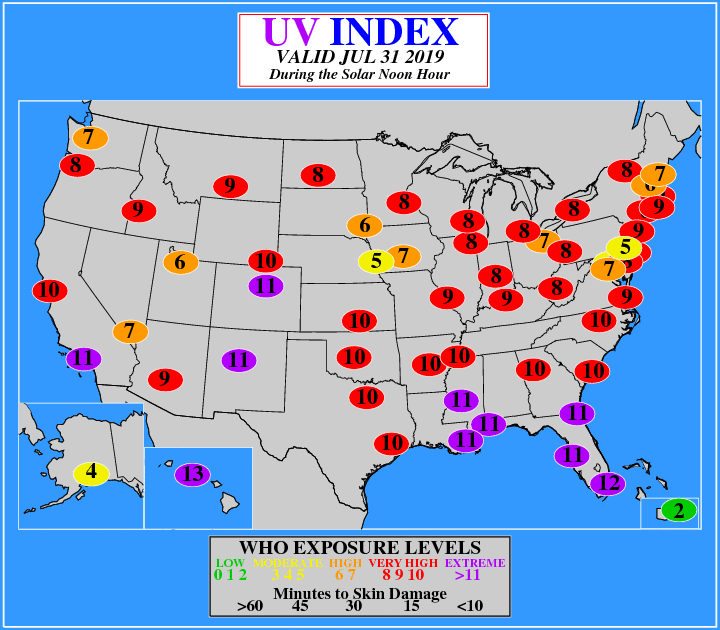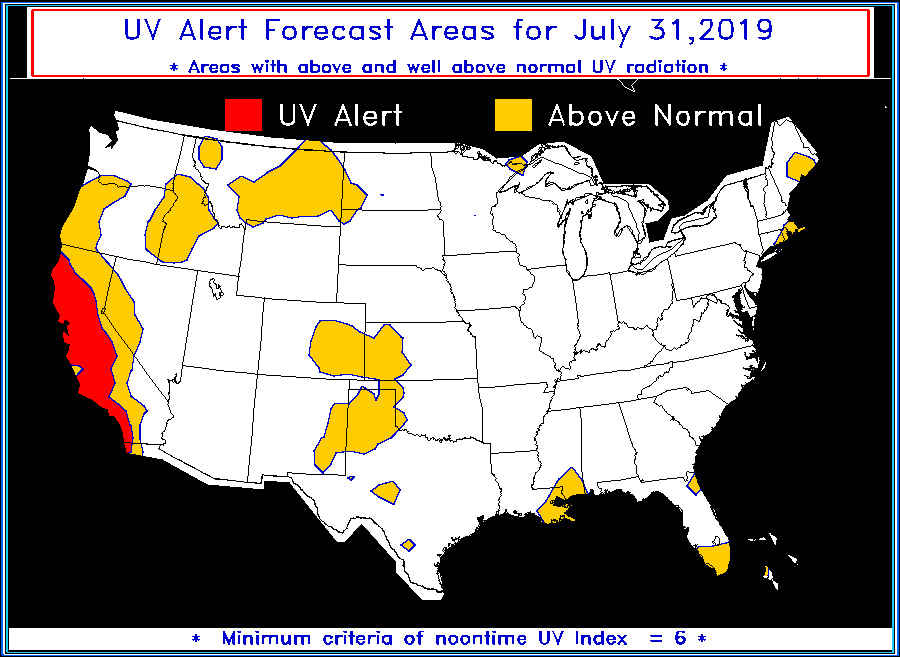Don’t let the Sun Ruin Your Day - Check the UV Index
How to interpret the UV Index
The low end of the UV Index scale (numbered score of 0-5) indicates there are fewer damaging rays and that shorter exposure times present little risk for most people. The higher the UV Index score, the greater the amount of potential skin and eye damaging radiation. At high UV Index levels (6 or greater), significant damage can occur in just a few minutes.

[The UV Index forecast, developed by NOAA’s Climate Prediction Center, assigns a numeric value to the risk of ultraviolet radiation (UV) exposure and helps you determine about how much time in the sun is safe.]
Sunburn is the result of overexposure to UV rays from the sun. Some people burn more quickly than others, but everybody can get burned. A number of environmental factors can influence the amount of radiation that reaches the Earth’s surface, including:
-
cloud cover,
-
the thickness of the protective ozone layer in the atmosphere;
-
bright surfaces, such as sand, water and snow
-
land elevation; and
-
amount of air pollution.
The UV Index is powered by data from NOAA’s recently upgraded Global Forecast System (GFS) model, which incorporates observations from NOAA’s weather satellites about ozone, clouds and snow, which reflects UV light and solar energy back into the atmosphere.

The darker side of sunlight
Beyond a painful sunburn, UV exposure over time can lead to the development of potentially lethal skin cancers. According to the U.S. Centers for Disease Control and Prevention, skin cancer rates have been on the rise over the past decade. Melanoma, the most deadly form of skin cancer, results in approximately 8,200 deaths each year.
Protect yourself
NOAA’s Climate Prediction Center and the Environmental Protection Agency (EPA), is making it easy for you to understand the threat of UV radiation and the time frame in which damage can occur.

The EPA provides general guidelines to protect yourself from the sun in the different exposure category ranges. When possible, schedule outdoor activities early or late in the day when the sun’s rays are less intense. If you’re outside when the UV Index is 3 or higher, it’s recommended you:
-
Seek shade.
-
Wear long-sleeved shirts, pants, and wide-brimmed hats as well as UV-blocking sunglasses.
-
Use a broad spectrum sunscreens, preferably reef-safe formulations, with a sun protection factor (SPF) of at least 15 or higher.